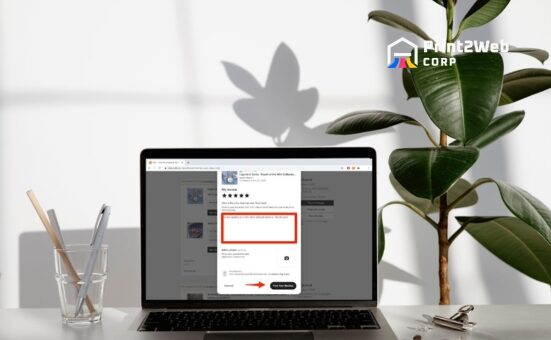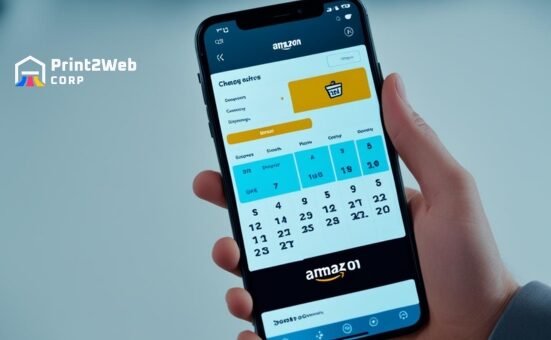Have you ever imagined your products reaching corners of the world you’ve never even visited? With Amazon, this isn’t just a dream; it’s a reality you can achieve. The thought of expanding your business across borders is exciting, but it’s also packed with challenges. So, how do you make sure your products stand out in a global marketplace? Let me guide you through the ins and outs, and who knows – maybe I could help spark the beginning of your international selling adventure.
Setting foot into international waters with Amazon can seem like navigating an unfamiliar terrain. Is it profitable? Absolutely! With a strategic approach, selling internationally on Amazon opens doors to new markets and countless potential customers eager for what you have to offer. The key lies in understanding the platform’s intricacies – from setting up your seller account correctly for international transactions to ensuring that each product complies with local market standards. It’s all about being well-prepared and aligning with what is necessary to excel on this global stage.
What You’ll Discover Inside:
- Step-by-step insights into launching globally
- Tips for attracting millions of new customers
- Secrets to mastering international fees and regulations
- Straightforward advice on managing finances abroad
How to Sell Internationally on Amazon?
Selling your products internationally on Amazon can open a whole new world of potential customers. Reaching consumers across the globe isn’t complicated when using this giant online marketplace.

Knowing the proper steps and guidelines will enable you to expand your business globally and achieve greater profits.
Step-by-Step Guide on How to Sell Internationally on Amazon?
To sell internationally, you first need a competent guide that outlines each necessary step. This guide includes things like understanding your potential markets, galleries, product details, conversion rates, pricing strategies, shipping details, tax compliance rules, and more. Regardless of where you’re based or what kind of product you’re selling, learning these steps is crucial for successfully expanding your business.
Setting up an international seller account is the very first step in this process. This involves selecting which marketplaces you want to sell in and reviewing their related fees. Next comes setting up localized listings for each market with translated product descriptions and accurate pricing considering currency conversion rates.
Understanding the Global Marketplace
The global marketplace can be quite diverse compared to localized trading scenarios. Different countries have different needs and preferences that vary based on culture, climate, or even socioeconomic conditions among many other factors.
Understanding the global marketplace allows businesses not only to adapt their marketing strategies but also their products according to different locations’ tastes and preferences. Research about consumer behaviors in various markets can lead to remarkable levels of success given that it enables sellers to cater exactly what’s desired in those specific regions.
Product Eligibility and Amazon Policies
Before selling an item in a particular market, you must verify if it is eligible to be sold there according to Amazon’s policies. For example, certain products are banned or require special permits in different parts of the world which could limit your sales.
Amazon enforces strict compliance with its rules and regulations. Violating any policy could harm your business and can lead to severe consequences such as the closure of your account. Therefore, checking each marketplace’s rules regarding product eligibility is vital before launching internationally. By adhering strictly to these guidelines and ensuring that all materials used in products are legally allowed in the countries you’re targeting, you can efficiently avoid any potential setbacks or legal issues.
Also Read: Going-Through-Best-Practices-for-Ensuring-Online-Payment-Security
Starting Your Journey as an International Seller on Amazon
Embarking on a journey as an international seller on Amazon opens up a whole new world of opportunities. With Amazon’s extensive marketplace and wide global footprint, you now have access to millions of clients beyond your local reach.

However, several key steps need to be taken for you to become a successful international seller on Amazon.
Setting Up Your Seller Account
The first step towards becoming an international seller is setting up your seller account. This process is quite simple and involves providing basic information such as your business name, address, and contact details. You will also be required to provide a valid bank account for receiving payments from sales. An important element in setting up your account is choosing the marketplaces where you want to sell; deciding based on the potential profitability and feasibility of shipping products there.
Setting up demands thoroughness especially in storage and return settings since it affects product availability in various marketplaces. Also, pay close attention when inputting bank details, because the routing number and account number should match perfectly with no room for errors as this could lead to payment issues later.
Listing Products for International Marketplaces
Once the setup is complete, embodying products into international marketplaces starts next. Key things are crafting product titles that appeal globally not just locally; ensuring descriptions contain adequate details highlighting selling points, and pricing competitively by keenly noting foreign exchange rates against the home currency.
Don’t forget about uploading high-quality images that allow potential buyers to get a clear view of what they are purchasing. Tailoring product information according to different locations’ conditions or demands aids in promoting efficiency while creating an appealing image to customers from all over the world.
Shipping Items Internationally
Shipping items internationally comes with its share of challenges such as higher costs and longer delivery times. Nevertheless, those can be managed effectively if proper processes are put into place from the early stages. First rule – always communicate clearly about longer delivery times and charges to your customers.
Further, partnering with reliable shipping services that offer international shipments plays a crucial role in this. Efficiency in this stage is significant as it greatly affects overall customer satisfaction. More so keeping an efficiently updated inventory can help you avoid delays and confusion.
Product Eligibility and Amazon Policies
The last but not the least step deals with comprehending product eligibility and abiding by Amazon’s policies. Before adding any product to your listing, it’s critical to carry out thorough research on its eligibility for sale in various international marketplaces as different regions have distinct regulations on the sale of certain products.
Furthermore, familiarize yourself with Amazon’s selling policies which range from product listing standards to dispute resolution methods. This not only aids in operating within the set guidelines but also helps to avoid unnecessary hitches disrupting smooth trading activities. All this process might seem daunting at first, however, once you properly align everything according to established procedures, things go pretty smoothly.
Dealing with Finances while Selling Internationally On Amazon
When you sell things in different countries through Amazon, there are special costs you need to think about. To keep your business strong and make money, it’s important to know what these costs are and how to handle them.

Plus, getting your payments smoothly means you need to understand the ways Amazon lets you get paid for your sales.
Managing International Selling Fees
There are several fees when you sell things to customers in other countries on Amazon. You’ll need to pay attention because these can add up and impact how much money you make. Some fees are for listing items, some for selling them, and others depend on how big or heavy the product is. Also, some marketplaces might charge extra fees that aren’t asked for in others.
Understanding Payment Options
Amazon gives sellers different ways to get their money from international sales. The usual method is a bank transfer into your account. But often, there’s more than one option—even if your bank is not in the same country as where you’re selling from! Remember that each payment method could come with its own small fee or exchange rate cost – so choose wisely!
Also Read: Unlock Success with Amazon Search Terms Report Insights
What is Amazon Global Selling (AGS), and What are its implications?
Amazon Global Selling, or AGS for short, is an exciting program. It’s a way to sell your products not just in one place but all over the world through Amazon’s websites. Imagine getting your items into the hands of people far away. That’s what AGS helps you do!

What AGS Is All About?
AGS lets you show and sell your things to customers in different countries with Amazon. The cool part? You use the same account that you would normally use for selling locally. This means it’s simpler than setting up shop in every country where you want to sell.
How Does AGS Work For You?
When you use AGS, Amazon takes care of many tricky parts of international business. They help make sure that when someone buys your stuff, it gets to them no matter where they are. And they assist with customer support and returns too, often in the local language of the buyer!
Advantages Of Becoming a Seller On Amazon With Amazon Global Selling
Amazon’s Global Selling platform is an exceptional opportunity for businesses to expand their reach beyond local markets. Using this platform, sellers can access millions of customers across the globe, opening up new territories and potential revenue streams.

Here are some critical advantages of utilizing Amazon Global Selling:
- Global Reach: Tap into Amazon’s vast customer base worldwide, making your products available to millions of potential buyers in different countries and regions.
- Streamlined Processes: Benefit from Amazon’s established infrastructure for international shipping, payments, and customer service, reducing the complexities associated with cross-border commerce.
- Localized Customer Experience: Utilize tools provided by Amazon to localize your product listings with translations and price conversions to enhance customer experience in different markets.
- Increased Visibility: Products listed through Amazon Global Selling have the potential for increased visibility leading to higher sales volumes due to Amazon’s robust search engine and recommendation system.
Also Read: Unleash Growth with the Ultimate Amazon Aggregator Solution
Crucial Factors of Selling Internationally On Amazon
When you decide to take your business beyond borders and sell internationally on Amazon, it’s not just about listing your products and waiting for the sales to roll in. There are vital elements that you need to get a handle on if you want to succeed.

Let’s delve into two of the most important factors: understanding taxes, regulations, and compliance, plus navigating language support.
Understanding Taxes, Regulations, And Compliance
Before diving into international waters with Amazon, it’s crucial to comprehend the tax laws and regulatory requirements that come along with selling in different countries. For instance, Europe has a system known as Value Added Tax (VAT), which affects how products are priced for consumers. VAT rates can vary significantly from country to country within Europe.
Besides VAT, there are identification processes and Know Your Customer (KYC) rules specific to European nations that must be followed rigorously. As an international seller, it’s your responsibility to ensure that your business adheres strictly to these laws and regulations. Failure to comply could lead not only to fines but also potentially having your seller account suspended.
Navigating Language Support
One size doesn’t fit all when dealing with customers from various parts of the world – cultural nuances and language barriers can make or break their shopping experience. Henceforth, Amazon provides language support tailored to each region’s local dialects, which ensures smoother communication between you (the seller) and them.
Providing customer service in the local language is not just about convenience; it reflects awareness and respect for cultural differences, enhancing the overall customer trust in your brand. Remember that proficiency in handling customer inquiries through Amazon’s local language support could lead to improved feedback ratings – a critical asset for any vendor aiming for longevity on this platform.
Frequently Asked Questions
Is Selling Internationally on Amazon Profitable?
Yes, selling internationally on Amazon can be profitable. It allows you to tap into new markets, reach more customers, and diversify your income.
What Should I Consider Before Selling Internationally on Amazon?
Before selling internationally, consider the product demand in other markets, understand the tax regulations and customs duties involved, and learn about international shipping strategies.
Do I Need to Pay Taxes in Each Country When Selling Internationally?
You may need to pay taxes like VAT in countries where your products are stored or sold. It’s important to consult with a tax advisor familiar with international e-commerce.
Can I Sell on All of Amazon’s Global Marketplaces from One Account?
No, you usually need to create separate seller accounts for each of Amazon’s global marketplaces. However, some regions are grouped under a unified account model.
How Does Language Support Work When Selling Internationally?
Amazon offers local language support and marketplace translation tools for listings. Additionally, hiring bilingual customer service agents can aid in better communication.
Conclusion
To wrap it up, stepping into the vast domain of international selling on Amazon is an exhilarating opportunity that could escalate your business to unprecedented heights. By now, you’ve gathered the wisdom on the critical areas – from tax intricacies and regulatory frameworks to optimizing language support for a global audience. Each aspect works as a cog in the grand machine of international e-commerce success.
Just remember that while opportunities are boundless, thorough preparation and understanding of these crucial factors remain key to profiting in global marketplaces. So go ahead, use this guide as your compass, and launch your business into an exciting world of international sales with confidence!







